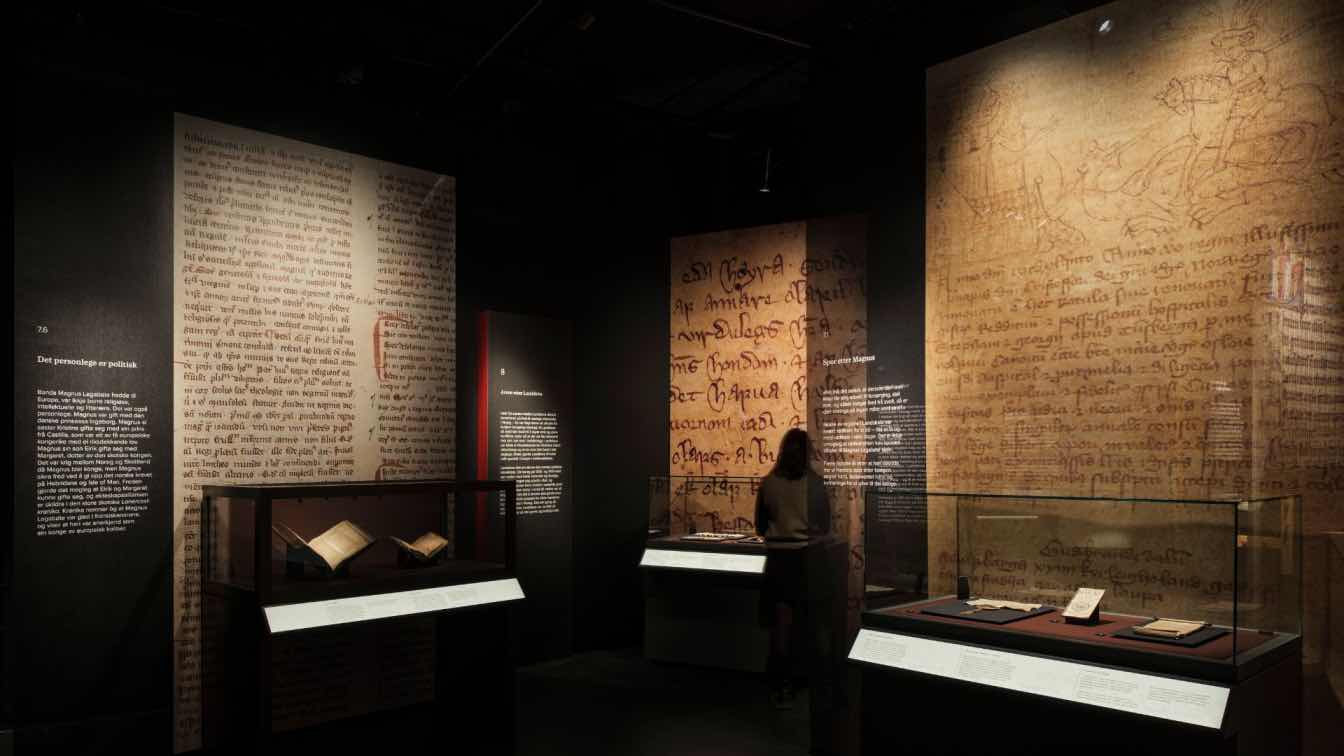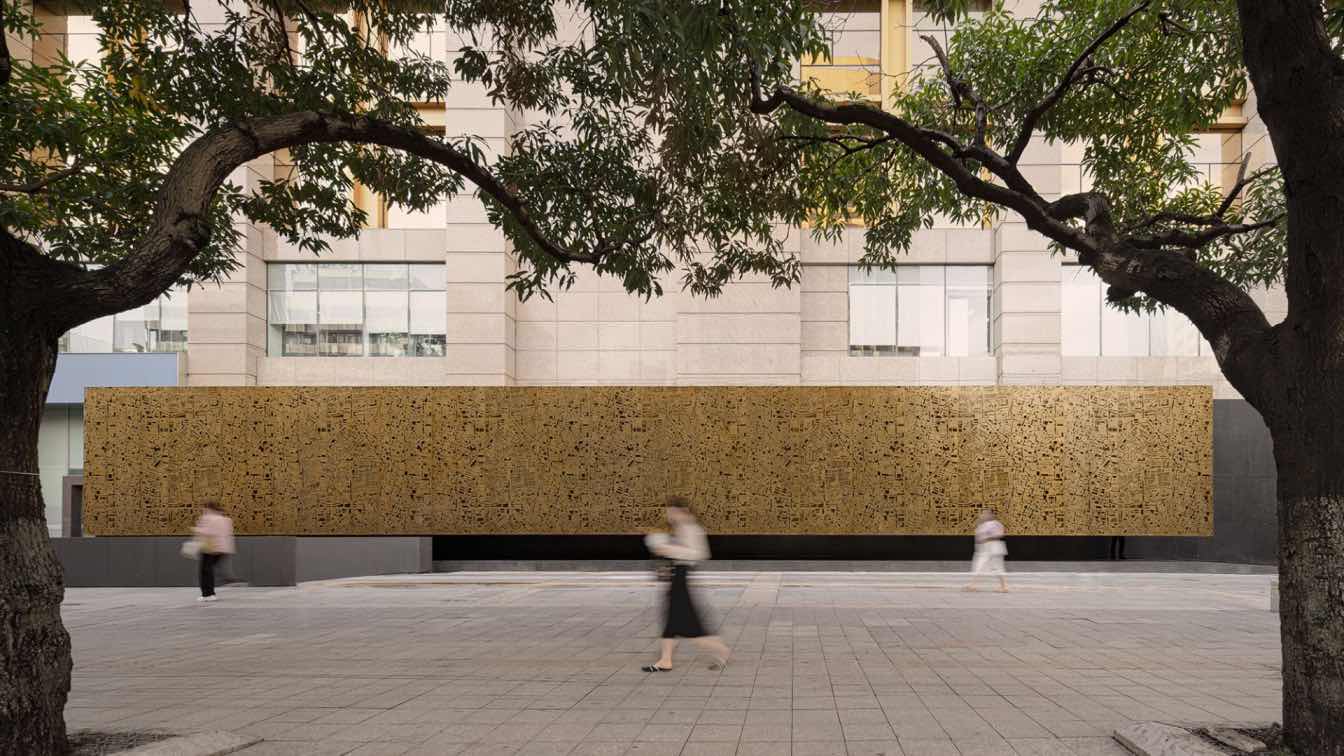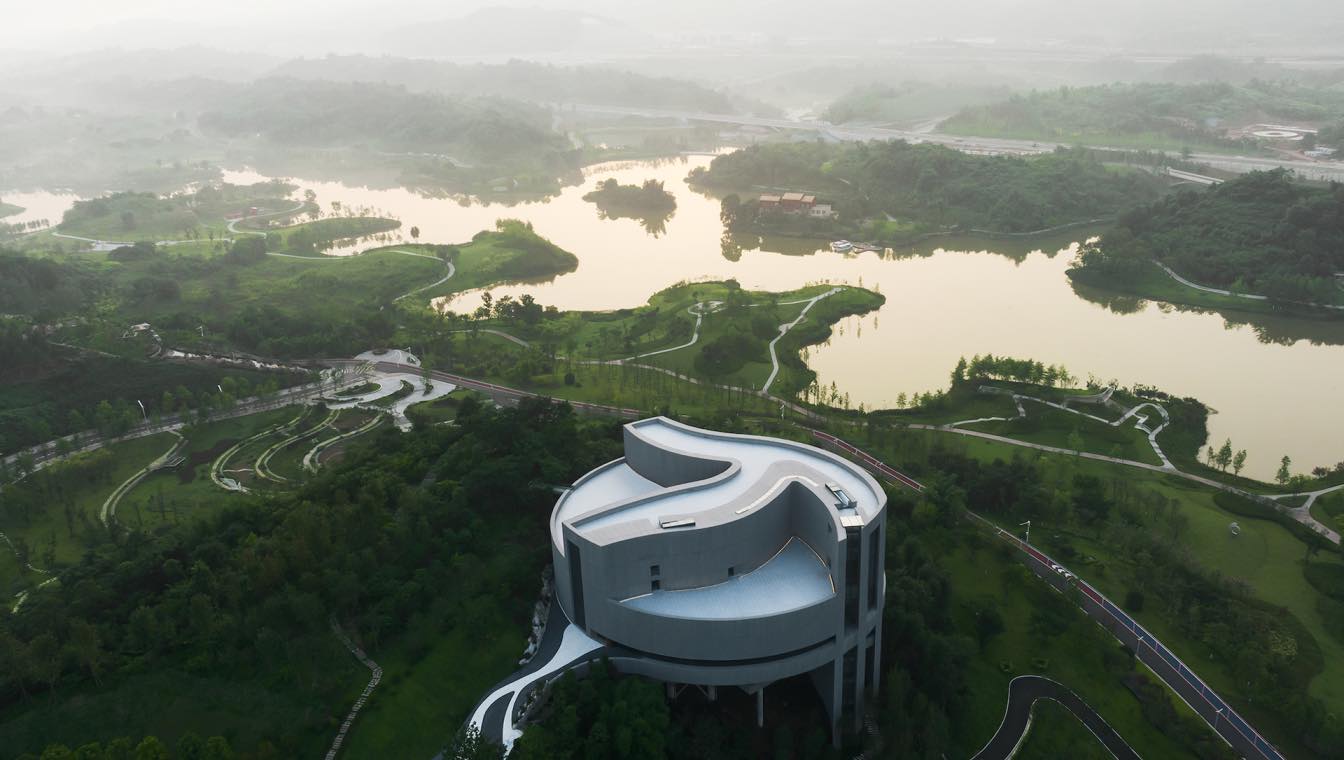Nissen Richards Studio has completed designs for ‘Upholding the Law: Magnus the Lawmender’s Law of the Land, 1274-2024’, a refined, atmospheric and delicately-staged exhibition for The National Library of Norway. The show celebrates the 750th anniversary of the country’s 1274 ‘Law of the Land’, which laid the foundation for the Norwegian legal system and for popular participation in it – effectively establishing the prerequisites for democracy. The exhibition is the practice’s fifth completed show for The National Library of Norway and is now open until 14 September, 2024.
“We really love working for this client”, Pippa Nissen of Nissen Richards Studio commented. “The subjects we have been immersed in so far as part of our ongoing collaboration have been as fascinating as they’ve been eclectic, from the novels of multi-million selling author Jo Nesbø to the phenomenon of Norwegian black metal. This new exhibition, focusing on such historic and powerful subject matter, is no different!”
About the Law of the Land:
Magnus the Lawmender's Law of the Land of 1274 was the first legal framework that applied to the entire Norwegian realm, remaining in effect in Norway for 400 years. The Law of the Land laid the foundation for the Norwegian legal system and popular participation, building on the ancient Norwegian tradition of ting assemblies, while also being influenced by groundbreaking thoughts and ideas circulating in Europe in the 13th century. With the Law of the Land, women gained inheritance rights for the first time, whilst the poor who couldn't feed themselves were no longer punished for stealing food. The Law of the Land also symbolises Norway's central role in political and intellectual Europe during the Middle Ages. Throughout 2024, its 750th anniversary will be celebrated across Norway.
"The Law of the Land is one of the most important documents in Norwegian history. It helped shape the lives of people in the country for over 400 years," National Librarian Aslak Sira Myhre commented. "At the same time, the law is a source of a lesser-known part of history, and it opens up a narrative about Norway as a medium-sized medieval kingdom that produced one of the most forward-thinking legislative works in Europe.”

About the exhibition:
The exhibition will provide the public with a unique opportunity to get up close with the Middle Ages. For the first time, exceptional handwritten documents such as the Gulatingsloven, Heimskringla, and some of the most beautiful examples of The Law of the Land will be accessible to the public, after being preserved in foreign collections for many centuries.
"Several of the documents we are exhibiting will be visible to a Norwegian audience for the first time since the Middle Ages. We hope that displaying them will contribute to making this part of medieval history as important to our self-understanding as Viking ships and burial mounds”, Aslak Sira Myhre added.
Design approach:
Nissen Richards Studio’s approach to the design, developed following their appointment to the project in late 2022, was to create an immersive atmosphere that would permit visitors the feeling of almost walking inside these incredible and hugely historically-significant books. Visual playfulness ensured a sense of wonder, based on the idea that laws are made up of words that gather strength as they are made first into pages and then into books, with structures and society then arising directly out of these. Individual words are treated as the central tenet of the design concept – as they are of the law. The exhibition is located in a predominantly dark space, with light used theatrically to highlight the exhibition’s structures, showcases and objects, with words and pages displayed at different scales and in both translucent or overlapping forms.
“It was vital to bring the texts to life via the design treatment” Pippa Nissen added, “by creating a sense of drama and even of reverie. We created columns around the show’s star books as the exhibition’s centrepiece, symbolizing columns of knowledge, with stacks of seemingly floating pages, arranged as if falling leaves of knowledge.”
Paper and the act of writing are also investigated as part of the exhibition’s visual themes, which consider material textures, highlighting and correcting, typographic styles and illustration. Manuscripts and the layout of text, including proportion, indentation, alignment, hand scribing and paper types and tones were all sources for the exhibition’s innovative and expressive layout and graphic design, which also fell under the Nissen Richards Studio remit.

Gauze ‘pages’ are angled through the space by each showcase, whilst contemporary angled boards, with a sharp and unique colour edge according to their location in one of the six different thematic sections of the show, are sited around the perimeter.
Because of the preciousness of the works on show, showcases were designed by Nissen Richards Studio with ultra-high-security credentials, as well as to the very highest conservation standards. They were also designed with future-facing flexibility, so that the investment in the structures can be spread into the coming years.
The showcases feature illuminated and angled labels for maximum accessibility and are lined in a luxurious fabric in deep jewel tones. Visitors will not overshadow the labels when looking at the books, nor does the text interfere with the experience. The new label-holders were retrofitted onto their existing cases too so that they feel part of the same family of furniture. The lighting inside then enabled a very careful focus around the books – to feel as if they are floating - with labels inside the cases which can also be illuminated.
“The whole exhibition was conceived very much according to sustainable principles” Pippa Nissen concluded. “The large gesture moments are made using banners, with the gauze pages suspended on strings like puppets. The show’s strong atmosphere is mostly created through the use of light and graphic print.”






















About Nissen Richards Studio:
Nissen Richards Studio is a double RIBA National Award-winning architects’ practice and exhibition design studio, working with many of the world’s greatest cultural institutions, from The Courtauld Gallery, British Museum, British Library, National History Museum, National Trust, The Wallace Collection, Wordsworth Trust, Kensington Palace and The Imperial War Museum in the UK to Kode, MUNCH and the National Library of Norway internationally. Most recently, the Studio completed the permanent exhibition design and interpretation for 37 galleries within The National Portrait Gallery.
Founded in 2010 and led by Directors Pippa Nissen and Jim Richards, Nissen Richards Studio’s approach combines a respect for all the voices in a project, a willingness to experiment, a unique storyboarding process and a fusion of architectural and theatre design processes. Nissen Richards Studio’s clear systems of thinking, working and communicating, together with a boundless curiosity about the world, translate into beautifully-designed spaces for people to come to, be stimulated by, enjoy and remember. In 2022, the Studio’s work, including a new-build viewing tower, at Anglo-Saxon royal burial site Sutton Hoo won an RIBA National Award, whilst in 2023, Nissen Richards Studio was part of the team that won an RIBA National Award for the transformation of The Courtauld Gallery, with the scheme going on to be shortlisted for The Stirling Prize and winning the RIBA People’s Poll Award.





